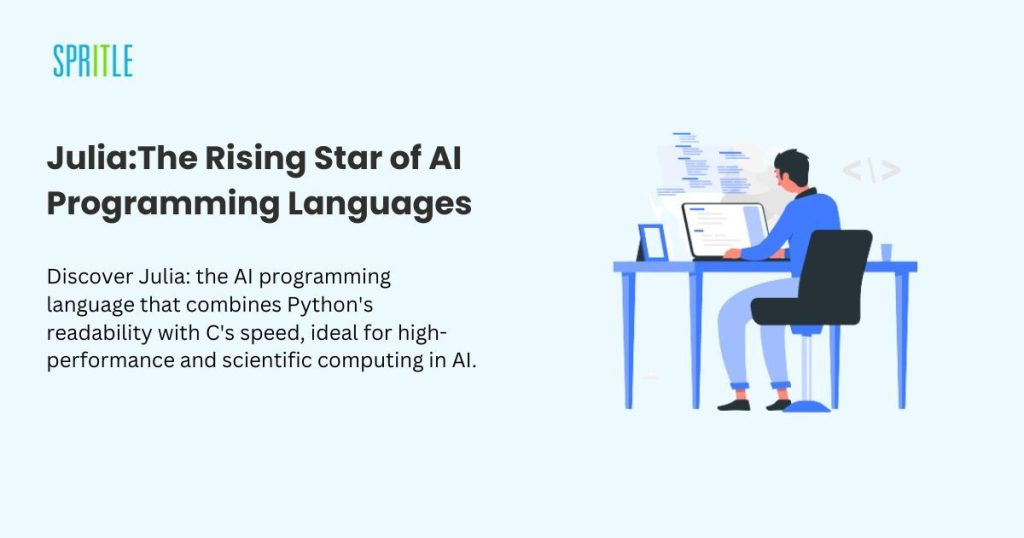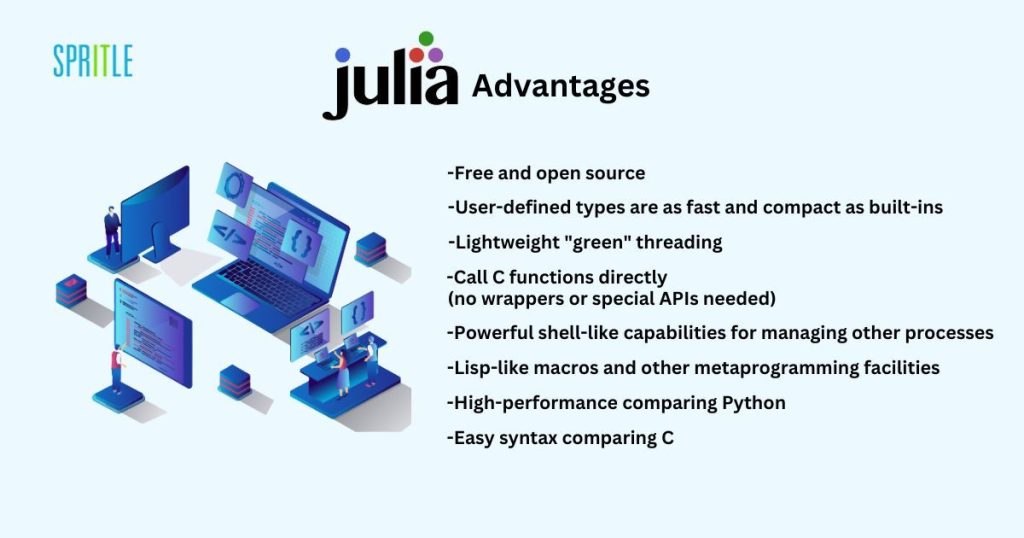
Introduction:
Have you ever wished for the readability of Python combined with the raw speed of C in a programming language? Julia might be the answer you’ve been searching for! This exciting language, which debuted in 2012, is rapidly gaining traction in data science and scientific computing. Julia is a high-performance programming language, with the tagline “Looks like Python, feels like Rust, and runs like C.” It’s also gaining significant interest in the field of Artificial Intelligence (AI) due to its unique blend of speed and readability.
Why Juila?
Julia is an excellent choice for scientific computing, numerical simulations, and data analysis. Its combination of high-level expressiveness and low-level performance makes it a powerful tool for researchers, engineers, and data scientists.
Why Choose Julia for AI Development?
Speed: Julia is known for its exceptional speed, rivaling languages like C++, making it ideal for computationally intensive AI tasks, such as deep learning with massive datasets.
Readability: Unlike C, Julia has a more readable and expressive syntax, similar to Python, allowing developers to write concise and maintainable code.
Focus on Scientific Computing: Julia is built for scientific computing tasks, making it well-suited for numerical computations prevalent in many AI algorithms.
Just-in-Time (JIT) Compilation: Julia uses JIT compilation, translating code into machine code at runtime, leading to significant performance gains.
Rich Ecosystem of AI Packages: While not as extensive as Python’s, Julia offers a growing collection of powerful AI packages like Flux.jl for deep learning and MLJ.jl for machine learning.

Who Should Consider Julia?
Julia excels in certain AI development scenarios:
- Research-oriented AI projects: When speed and numerical accuracy are crucial for experimentation and algorithm development.
- Large-scale deep learning models: When dealing with massive datasets and complex models that demand raw processing power.
- Performance-critical AI applications: When real-time performance and low latency are essential, such as in robotics or embedded systems.
Julia offers a strong alternative to languages like Python for AI development, particularly for projects requiring high performance and numerical computations.
Installing Julia: A Step-by-Step Guide
First, visit the Julia website’s download page. There, you’ll find several options for running Julia. Navigate to the “Current stable release” table and download the version appropriate for your OS. I’m downloading the Generic Linux version for x86.
Then unzip the package by using this command
tar -xvzf julia-1.10.3-linux-x86_64.tar.gzNext is an important step. we need to add the path to Julia binary executable to the system path. In terminal, run
sudo nano ~/.bashrcAnd add the path
export PATH="$HOME/julia-1.10.3/bin:$PATH"Now exit and run
source ~/.bashrcNow let’s execute some simple methods in Julia.
Tadaaa! we’re done. But Most of us use VS code as IDE, so let’s play with Julia on the VS code
First enable the extension for Julia
Now create a Julia file with extension .jl. Im creating a welcome_julia.jl file.
And we can call the file like this
Julia Packages for Every Need
Julia’s General Package Registry is a treasure trove of over 8,000 packages, encompassing a vast array of domains:
- Scientific Computing: Packages like DifferentialEquations.jl and Statistics.jl provide powerful tools for numerical analysis, data manipulation, and statistical modeling.
- Machine Learning: Julia shines in machine learning with packages like MLJ.jl and Flux.jl, offering efficient algorithms and frameworks for building and deploying models.
- Data Science: DataFrames.jl and related packages streamline data cleaning, exploration, and visualization, making data science workflows a breeze.
- Web Development: While not its primary focus, Julia offers frameworks like Genie.jl and WebSockets.jl for building web applications leveraging Julia’s speed and capabilities.
Conclusion
Julia isn’t a one-size-fits-all solution, but for AI projects demanding high performance and numerical computations, it’s a compelling alternative. If you seek a language balancing speed with readability, tailored for scientific computing, Julia merits exploration. It’s poised to shape the future of AI development. This blog aims to introduce Julia’s capabilities for AI exploration, with future articles delving deeper into its functionalities, data types, and functions. The Julia official documentation and free courses on Julia Academy offer extensive resources for further exploration.
Stay tuned for more!
